Sahiyo’s Mariya Taher receives Survivor Activist Award
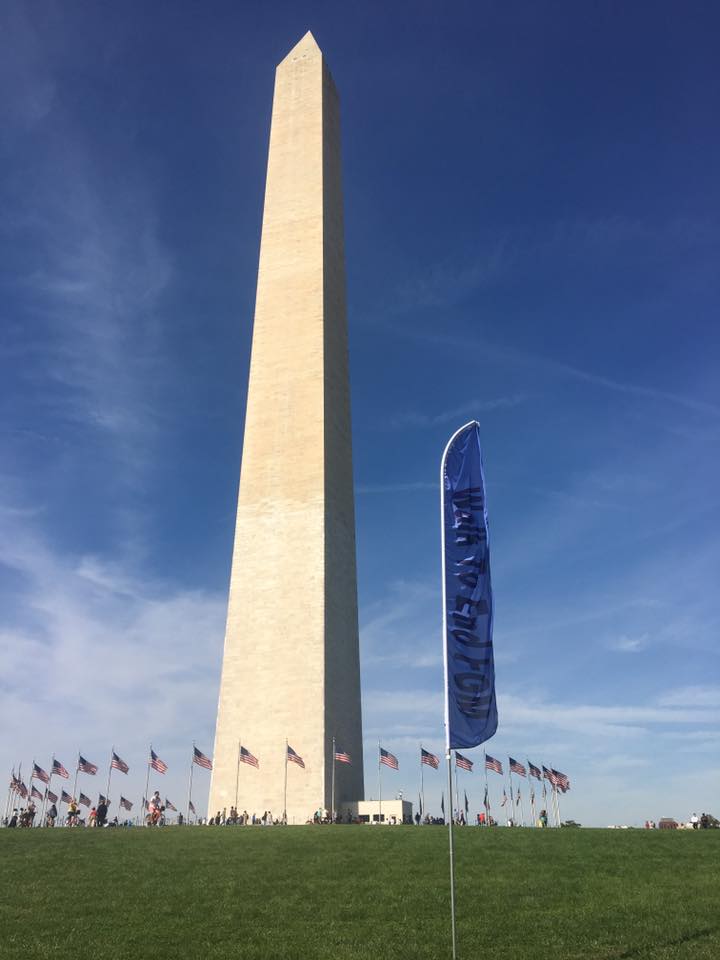
On Saturday, October 2, the Global Woman P.E.A.C.E. Foundation recognized Sahiyo Cofounder, Mariya Taher with the Survivor Activist Award at their annual 5K Walk to End FGM Charity Event in Washington DC. Mariya along with eight other deserving women and men were given Recognition Awards for the outstanding work toward ending female genital cutting and other injustices against women and girls during the pre-walk ceremony on the Washington National Mall in Washington, D.C. To learn more visit the Global Woman P.E.A.C.E. Foundation blog here.
Insia Dariwala receives Women Have Wings Courage Award
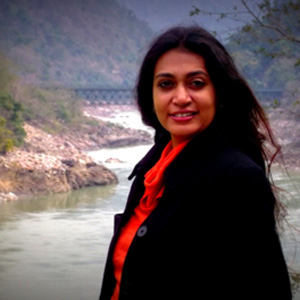
Sahiyo co-founder Insia Dariwala has received the prestigious Women Have Wings Courage Award for her work to end Female Genital Cutting and bring attention to all forms of child sexual abuse. This award was instituted in 2012 to honor “women of courage who have taken bold risks to ensure a more just and peaceful future for us all”, and has been awarded to 31 women around the world so far. Insia, a filmmaker based in Mumbai, is not only the co-founder of Sahiyo but also the founder of the Hands of Hope Foundation, which raises awareness about child sexual abuse through visual art and education. According to her award citation, “Insia is an incredible advocate because she goes where the silence is. In the past few years, she has used her art to ensure that silent issues such as child abuse and FGM/C are brought into the light, discussed, and acted upon. Be it with diaspora communities in the US or back in India, Insia has been one of the faces and the voices of a small group of brave survivors denouncing the practice and calling for its eradication.” To learn more about Insia’s award, click here.
Sahiyo to be a part of a new global movement for progressive Muslims

Furore about Female Genital Cutting in Kerala: Impact of Sahiyo’s investigation
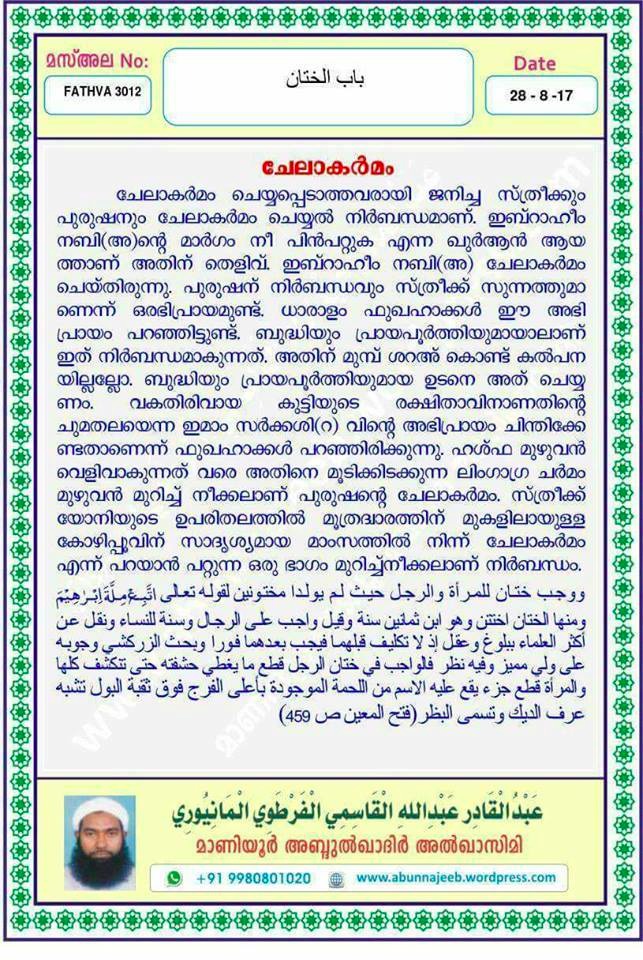
by Aysha Mahmood On August 14, 2017, Sahiyo published a preliminary investigative report pointing to evidence that Female Genital Cutting (FGC) – a practice so far associated only with the Bohras in India – is also being practiced in Kozhikode, Kerala. The report was published in both English (here) and Malayalam (here) and it was followed by a furore within the media and social media circles of Kerala. Sahiyo’s report was picked up by all the prominent media houses in the state. Mathrubhoomi, a major Malayalam newspaper, conducted a follow-up undercover investigation at the same FGC clinic that Sahiyo had visited, and confirmed the Sahiyo report. Mathrubhumi’s report of August 27 also provided some additional information about the way that clinic has been performing and propagating Female Genital Cutting: The doctors at the clinic mentioned the presence of a middleman named Ansari who brings women to them for FGC. Mathrubhumi claims to have communicated with some people online who offered to take them to clinics that conduct FGC and also offered contacts of traditional “Ossathis” or cutters. Considering Mathrubhumi is one of the two leading newspapers in Kerala, what followed was an uproar, to put it mildly. Prominent religious leaders came out denouncing FGC and made statements against the practice. The health minister of Kerala, KK Shailaja, has ordered the District Medical Officer and Health Department Director of Kozhikode (Calicut) for a probe into the matter, and has asked them to submit a report at the earliest. The minister has stated that any clinic or doctor found practicing FGC will immediately be punished. On August 27, the Youth League of the Indian Union Muslim League (IUML) marched to the Kozhikode clinic in question with slogans and placards, and in the presence of the media, proceeded to close the clinic. The clinic is now dysfunctional. Kerala IMA’s press statement condemning FGC On August 28, the Kerala branch of the Indian Medical Association also issued a press release taking a strong stance against FGC. The Association described the practice as “unscientific and against medical ethics”. The Kozhikode police is also investigating the matter. The city police commissioner has said that it is possible to file a criminal case against the perpetrators of FGC if its victims are ready to do so. In general, all the major political and religious institutions in Kerala have condemned the act and promised support to put an end to such a practice. The former state minister for social welfare, Dr. MK Muneer of the IUML party, has said, “It is very shocking news to hear that something we only thought existed among African tribes, exists also in Kerala. Strict action should be taken against such activities.” A Malayali student, Shani SS, wrote about her personal experience of having undergone FGC, becoming perhaps the first woman from Kerala to publicly share her story of being cut. Her story was published in Mathrubhumi, and mentioned not only her own FGC but also that of her mother, several years ago. Responses on social media Malayalam social media has been buzzing with debates on FGC and the reports in Sahiyo and Mathrubhumi, but people’s reactions have been a mixed bag. The main reaction has largely been disbelief and the usual conspiracy theories of “This is paid news to defame Muslims”, or “because we have not heard of this ever in our lives, it does not exist”. For some, the reaction has been, “to each his own”. But there is also a comparatively large group of people of social media who have openly supported FGC and are doling out religious texts and Fatwas. Most of these people are religious scholars from the Shafi sect of Islam and are quite influential in the interior pockets of Kerala. Some of them have openly attacked the religious leaders who spoke against FGC in the media. One of the prominent faces of Kerala politics and its religious front, Sayyid Munavvar Ali Shihab Thangal (the son of IUML’s former president) was forced to take down his Facebook status that spoke against FGC. Supporters of the practice made fun of his “ignorance of Islamic texts and foregoing his religion for admiration from the ignorant”. Another small-time religious scholar and moulavi, Maniyoor Abdul Kadir Al Kassimi, has been circulating a Fatwa with a Hadith and details on why circumcision is equally compulsory for men and women. This has been found doing rounds on Whatsapp and Facebook and some blogs. The same emotion can be seen reflected in many Facebook posts and comments by Muslim scholars and moulavis from the same sect and community. These have been liked and shared by many people. It is a reason to be concerned that there is at least some level of acceptance and support for FGC amongst a considerable number of followers. Not surprisingly, almost all the voices defending FGC on Malayalam social media are those of men. Women’s voices are nowhere to be heard.
Sahiyo co-founder curates a week-long Twitter discussion on FGC

From July 3 to July 7, Sahiyo co-founder Aarefa Johari was invited to curate @MuslimVoicesIN, a Twitter handle run by a group of progressive Indian Muslims. The handle celebrates the plurality of Muslim identities in India and discusses different topics relevant to Indian Muslims each week. Aarefa was invited to curate a discussion on Female Genital Cutting among Bohra Muslims. Since Bohras are a small minority sub-sect, the topic came as a shock to many of the other Indian Sunnis and Shias who participated in the week-long discussion. In the span of five days, Aarefa curated eight threads discussing various aspects of FGC: an explanation of what FGC is, the relevance of the clitoris, the reasons given for performing FGC, its health consequences, the alarming trend of medicalisation, the debates surrounding FGC-related terminology and laws on FGC, and the contentious issue of parental rights. The Twitter discussions elicited a mixed response. Many Muslims were upset that FGC was being misinterpreted as an “Islamic” practice by Bohras, and dismissed it as a topic irrelevant to “mainstream Muslims”. However, many others were eager to learn more about a topic they had little knowledge of. To read Aarefa’s discussion on FGC on @MuslimVoicesIN, click here.
Female Genital Cutting is being practiced in Kerala too: Sahiyo investigation
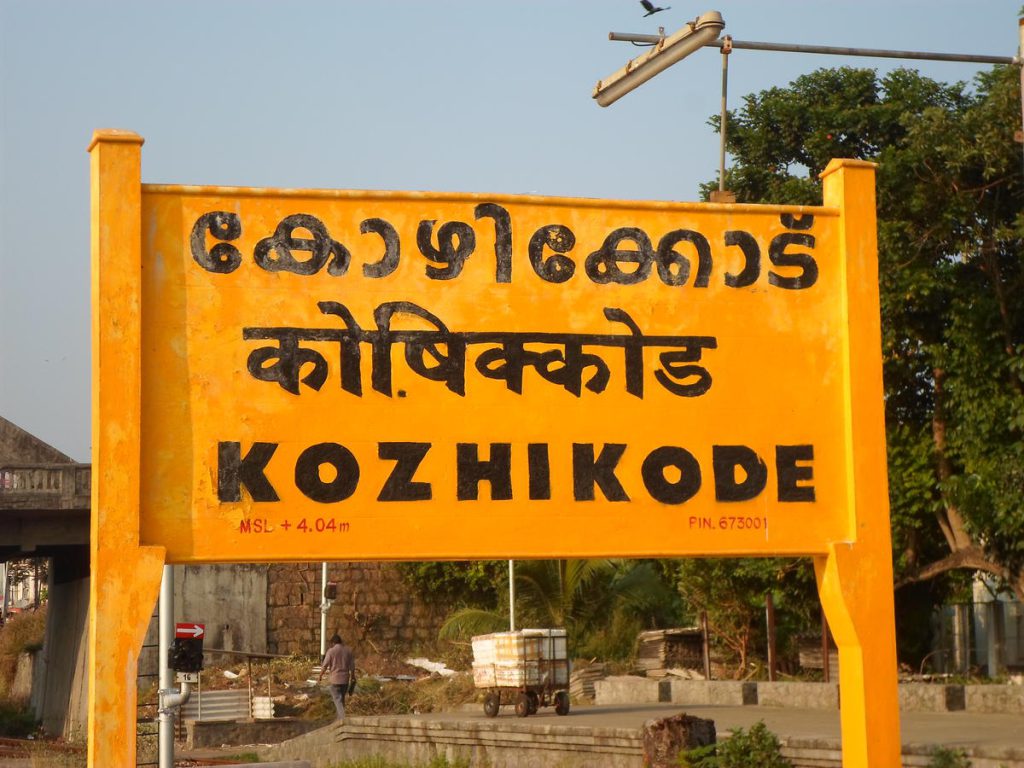
by Aarefa Johari and Aysha Mahmood (Read the Malayalam version of this report here.) The practice of Female Genital Cutting (FGC) in India has so far been associated only with the Dawoodi Bohra community and other smaller Bohra sub-sects. However, a recent investigation by Sahiyo found that FGC – the ritual of cutting parts of the female genitalia – is also being practiced by some other communities in at least one part of Kerala. During an investigation in February, Sahiyo found a medical clinic in Kozhikode (Calicut) where two doctors admitted that they perform the procedure of “sunnath”, or circumcision, on both boys and girls. They claimed that women from several local Muslim sects are increasingly coming to their clinic to have sunnath performed for themselves, their daughters and even their daughters-in-law. The doctors said that in the female circumcision ritual, they cut the prepuce of the clitoris, also known as the clitoral hood, because it is allegedly “good for married life”. They also mentioned that “some husbands insist on it”. The doctors claimed that this ritual is also practiced in Saudi Arabia, Egypt and Africa, but denied that it could be harmful. However, the sunnath ritual described by the Kozhikode doctors falls within the World Health Organisation’s definition of Female Genital Mutilation/Cutting (FGM/C), which is internationally recognised as a violation of human rights and a form of discrimination against women. WHO defines FGM/C as “all procedures that involve partial or total removal of the external female genitalia, or other injury to the female genital organs for non-medical reasons”. WHO has classified FGM/C into four types, based on degrees of severity. The least severe – and most common – is Type 1, which involves partial or total removal of the clitoris or the clitoral hood. (Read about the other Types of FGM/C here.) Female Genital Cutting in Kerala Sahiyo’s investigation in Kerala was based on a tip-off from a resident of the state who had come across discussions about sunnath on females in some online Malayalam forums. The resident claimed that the practice is typically performed by an “ozathy” or a traditional cutter without medical training, but is also being done by some doctors in the Malabar region. When Sahiyo spoke to gynaecologists in prominent hospitals in Kozhikode and Malapuram, they stated they were unaware of the practice and were firmly opposed to it. However, one small clinic in Kozhikode, run by a doctor known for performing male circumcisions, candidly admitted practicing sunnath on girls as well. For the investigation, the Sahiyo reporter posed as woman who needed to make inquiries about female sunnath because her fiancé’s mother wanted her to be circumcised before marriage. When asked if she performs female sunnath, the lady doctor at the clinic said, “yes, we do it”. She said that the practice involved “cutting the foreskin of the clitoris” to increase sexual pleasure, and that it is “good for married life”. The lady doctor claimed that the practice was now growing popular among Muslim women from “many sects” in Kerala, and that she performed it for girls and women of “any age”. For very young girls, she said, the procedure is sometimes performed by the male doctor who runs the clinic. The doctors apply local anaesthesia before the cutting, and they claim the wound takes five days to heal. “It is better to do it when the girl is a baby,” the lady doctor said. “But these days a lot of women prefer to get it done for themselves immediately after delivering their baby, when they’re also getting other stitches to their vagina. That way they have to deal with two pains in one go.” According to the doctors, some women also ask for sunnath after delivery because “delivery lessens sexual pleasure and the sunnath helps enhance it”. The lady doctor also offers pre- and post-marriage counselling at the clinic, and she claimed that she recommends sunnath for women during such counselling to allegedly improve their sex lives. “Once their sex life is better, their marriage will also be happy,” she said. When Sahiyo asked whether the practice is compulsory for Muslim women, the doctor said, “It is not compulsory, but if your mother-in-law has told you to do it, then it is compulsory for you, you have to get it done.” The male doctor at the clinic claimed that the practice is mentioned in “four or five Hadiths”, or Islamic texts containing the teachings of the Prophet. “You should read up about it, this is also done in Saudi, Egypt and Africa,” he said. The doctor denied any knowledge of the fact that this practice is controversial or that some African communities cut more than just the clitoris. “There is no controversy, very little is cut,” he said. Despite this, the clinic’s website mentions only male circumcision in the list of services it offers, and makes no mention of female circumcision. The practice is secretive, the doctors said, because it is a “female issue”, and the religious taboos associated with “all things female” prevent people from talking about it. However, the doctors asked the Sahiyo reporters to “spread the word” among friends that they perform sunnath for girls. It is unclear how widespread the practice of FGC is in Kerala, or for how long it has been practiced in the region. Since the investigation, Sahiyo has come across at least two persons – one from Kerala and one from Coimbatore, Tamil Nadu – who claim to know a female relative who has undergone sunnath, but the women in question did not wish to come on record. Is FGC illegal in India? According to WHO, there are no medical benefits of any type of FGM/C, and the practice can in fact be harmful. The negative health consequences of Type 1 FGM/C include pain, bleeding, urinary problems, infections, injury to genital tissue, sexual problems and long-term psychological trauma. The clitoris, located above the vagina and urethra, is a bundle of sensitive nerve tissue that
പെൺസുന്നത്ത്/ചേലാകർമ്മം കേരളത്തിലും ഒരു സഹിയോ അന്വേഷണം

– ആരിഫാ ജോഹരി , ആയിഷ മഹ്മൂദ് എന്നിവരുടെ കണ്ടെത്തലുകൾ. (Read the English version of this report here.) ഇന്ത്യയിൽ പെൺകുട്ടികളുടെ ചേലാകർമ്മം, ഇന്ന് വരെ ദാവൂദി ബോഹ്റാ വിഭാഗക്കാരുടെ ഇടയിലും മറ്റു ചെറുബോഹ്റാ വിഭാഗങ്ങളുടെയും ഇടയിൽ മാത്രമാണ് ആചരിച്ചു വരുന്നത് എന്നാണു പൊതുവെയുള്ള വിശ്വാസം . എന്നാൽ, സഹിയോ എന്ന സംഘടന ഈയടുത്ത് നടത്തിയ ചില അന്വേഷണങ്ങളിൽ , പെൺസുന്നത്ത് മറ്റു ചില ഇസ്ലാമിക വിഭാഗങ്ങളുടെ ഇടയിലും , കേരളത്തിന്റെ ചിലഭാഗങ്ങളിൽ എങ്കിലും, നടത്തുന്നതായി സൂചന ലഭിക്കുകയുണ്ടായി. ഫെബ്രുവരിയിൽ നടത്തിയ ഒരു അണ്ടർകവർ അന്വേഷണത്തിൽ, സഹിയോയുടെ പ്രവർത്തകർ, കോഴിക്കോട്ടുള്ള ഒരു ക്ലിനിക്കിൽ, പെൺചേലാകർമ്മം ചെയ്യാറുണ്ടെന്നു സമ്മതിക്കുന്ന രണ്ട് ഡോക്ടർമാരെ പരിചയപ്പെടുകയുണ്ടായി. പെൺകുട്ടികളുടെയും ആൺകുട്ടികളുടെയും ചേലാകര്മ്മം അവരുടെ ക്ലിനിക്കിൽ സ്ഥിരമായി നടക്കാറുണ്ടെന്ന് അവർ അവകാശപ്പെട്ടു. അവരുടെ വാദമനുസരിച്ച് കേരളത്തിന്റ പലഭാഗങ്ങളിൽ നിന്നും സ്ത്രീകൾ സുന്നത്ത് ചെയ്യാനായി അവരെ സമീപിക്കുകയും, അവരുടെ പെൺമക്കളെയും, മരുമകളെയും കൊണ്ട് വരാറുണ്ടെന്നും പറയുന്നു. ഇവരുടെ എണ്ണത്തിൽ വർദ്ധനവും ഉണ്ടെന്ന് അവർ പറയുന്നു. ഡോക്ടർ വിശദീകരിക്കുന്നത്, പെൺസുന്നത്തിനു സ്ത്രീകളുടെ യോനീഛദത്തിന്റെ (clitoris) അറ്റത്തുള്ള തോല് നീക്കുകയാണ് ചെയ്യുക. ഇത് clitoral hood എന്നാണുഅറിയപ്പെടുന്നത്. അദ്ദേഹത്തിന്റെ അഭിപ്രായത്തിൽ ഇത് “വൈവാഹികജീവിതം അത്യാഹ്ലാദകരമാക്കുന്നു”. മാത്രമല്ല ചില ഭർത്താക്കന്മാരും, ഭാര്യമാരും ഇതിനു നിർബന്ധം പിടിക്കുകയും ചെയ്യുന്നു. സൗദിയിലും ഈജിപ്തിലും ആഫ്രിക്കയിലും ഇത് സർവ്വസാധാരണമാണെന്നും- ഇതിൽ യാതൊരു അപകടം ഇല്ലെന്നും അവർ സാക്ഷ്യപെടുത്തുന്നു. എന്നിരിക്കിലും, കോഴിക്കോട്ടുള്ള ഈ ഡോക്ടർമാർ വിവരിച്ച രീതിയിലുള്ള ചേലാകർമ്മം ലോകാരോഗ്യസംഘടനയുടെ (WHO) Female Genital Mutilation / Cutting (FGM/ C) എന്ന നിർവചനത്തിൽപെടുന്നതാണ്. ഇതാവട്ടെ മാനുഷികാവകാശങ്ങൾ ഹനിക്കുകയും, സ്ത്രീകൾക്ക് എതിരായുള്ള വിവേചനപൂർണ്ണനടപടിയായി അംഗീകരിക്കപ്പെട്ടതും ആണ്. ലോകാരോഗ്യസംഘടന FGM/ Cയെ ഇങ്ങനെ നിർവചിക്കുന്നു “സ്ത്രീകളുടെ ബാഹ്യമായി കാണപ്പെടുന്ന യോനി വൈദ്യശാസ്ത്രപരമായ ആവശ്യങ്ങൾക്കല്ലാതെ പൂർണ്ണമോ ഭാഗികമോ ആയി നീക്കം ചെയ്യുന്നതോ, മുറിവേൽപ്പിക്കുന്നതോ ആയ എല്ലാ രീതിയിലുള്ള പ്രവർത്തിയും ഇതിൽപെടുന്നു” ലോകാരോഗ്യസംഘടനാ FGM/ C അതിന്റെ തീവ്രത അനുസരിച്ച് നാല് തരമായി തിരിച്ചിരിക്കുന്നു. ഏറ്റവും തീവ്രത കുറഞ്ഞതും -എന്നാൽ ഏറ്റവും പൊതുവായി നടത്തപെടുന്നതും ഇതിൽ ടൈപ് വൺ എന്ന് വിളിക്കപ്പെടുന്ന അഗ്രചർമ്മം മുറിച്ച് നീക്കുന്ന രീതിയാണ്. കേരളത്തിലെ പെൺസുന്നത്ത്: സ്ത്രീചേലാകർമ്മത്തെ കുറിച്ചുള്ള ഒരു മലയാളം ബ്ലോഗിൽ വന്ന കമന്റ് കാണുകയും , സഹിയോയെ ബന്ധപ്പെടുകയും ചെയ്ത ഒരു മലയാളിയിൽ നിന്നാണ് നമ്മുടെ അന്വേഷണം തുടങ്ങുന്നത്. അദ്ദേഹത്തിന്റെ അറിവ് വച്ച്, കേരളത്തിൽ ഇത് നടത്തുന്നത് “ഒസ്സാതികൾ” എന്ന് പ്രാദേശികമായി അറിയപ്പെട്ടിരുന്ന ക്ഷുരകന്മാർ ആയിരുന്നു- അപൂർവ്വമായി ഡോക്ടർമാരും. ഇതനുസരിച്ച് സഹിയോ പ്രവർത്തകർ മലബാറിലെ ചില ആശുപത്രികൾ സന്ദർശിക്കുകയും , അന്വേഷണം നടത്തുകയും ചെയ്തു. ഈ ഹോസ്പിറ്റലുകളിൽ ഞങ്ങൾ ബന്ധപ്പെട്ട ഡോക്ടർമാർ ഇങ്ങനെയൊരു ആചാരത്തെ കുറിച്ച് കേട്ടറിവ് മാത്രമാണെന്നും , അതൊരു രീതിയിലും അംഗീകരിക്കുകയോ പിന്തുടരുകയോ ചെയ്യാറില്ല എന്ന് ഉറപ്പിച്ച് പറഞ്ഞു. മാത്രമല്ല, അങ്ങനെയുള്ള എന്തെങ്കിലും കണ്ടാൽ അത് റിപ്പോർട്ട് ചെയ്യുകയും ചെയ്യും എന്നും പറഞ്ഞു. ഇതിനു ശേഷമാണ് സുന്നത്ത് ക്ലിനിക് എന്ന് പരക്കെ അറിയപ്പെടുന്ന ഒരു ചെറിയ ക്ലിനിക്കിൽ ഇത് ചെയ്യാറുണ്ട് എന്ന് അവിടെയുള്ള ഡോക്ടർ തന്നെ യാതൊരു സങ്കോചവും ഇല്ലാതെ സമ്മതിച്ചത്. അന്വേഷണത്തിനായി സഹിയോപ്രവർത്തകർ ആവശ്യക്കാരായി നടിക്കുകയും അവരെ സമീപിക്കുകയും ചെയ്തു. ഒരു പ്രവർത്തക തന്നെ ഭർതൃവീട്ടിൽ നിന്നും നിർബന്ധിക്കുന്നു എന്ന വ്യാജേന അതിനെ പറ്റി കൂടുതൽ അറിയാൻ വന്നതാണെന്നും പേടിയുണ്ടെന്നും പറഞ്ഞു. “ഇവിടെ ഇഷ്ടം പോലെ ചെയ്യാറുണ്ടല്ലോ” എന്നായിരുന്നു ലേഡി ഡോക്ടറുടെ മറുപടി. തുടർന്ന് അത് ചെയ്യുന്ന രീതി വിശദമായി പറഞ്ഞു തരികയും “ലൈംഗിക സുഖം വർദ്ധിക്കുകയും” “വൈവാഹികജീവിതത്തിനു ഒഴിച്ച് കൂടാനാവാത്തതും” എന്ന് ഊട്ടിഉറപ്പിക്കുന്ന രീതിയിൽ പറയുകയും ചെയ്തു. തങ്ങളുടെ അടുത്ത് വൈവാഹിക കൗസലിങ്ങിന് വരുന്നവരോട് തങ്ങൾ പെൺസുന്നത്ത് നീർദ്ദേശിക്കാറുണ്ടെന്നും, അതവരുടെ ലൈംഗികജീവിതവും വിവാഹജീവിതവും ആനന്ദപ്രദമാക്കും എന്നും ഇവർ അവകാശപ്പെടുന്നു. കേരളത്തിലെ എല്ലാ വിഭാഗം മുസ്ലിങ്ങളുടെയും ഇടയിൽ ഇത് വളരെ പ്രചാരം നേടുന്നുണ്ടെന്നും ആളുകൾ അന്വേഷിച്ച് വരുന്നുണ്ടെന്നും ഇവർ പറയുന്നു. മാത്രമല്ല, എല്ലാ പ്രായത്തിലുള്ള പെൺകുട്ടികളിലും ചെയ്ത പരിചയം തങ്ങൾക്കുണ്ടെന്നും ഇവർ അവകാശപ്പെടുന്നു. വളരെ കുഞ്ഞുകുട്ടികൾക്ക് അധികവും പുരുഷഡോക്ടർ ആണ് ചെയ്യാറുള്ളതെന്നും മറ്റുള്ളവ താനാണ് കൈകാര്യം ചെയ്യാറുള്ളതെന്നും ലേഡി ഡോക്ടർ പറഞ്ഞു. പൂർണ്ണ സ്വകാര്യത ക്ലിനിക് വാഗ്ദാനം ചെയുന്നു. ചേലാകർമ്മത്തിനു മുൻപേ ലോക്കൽ അനസ്തീസിയ ചെയ്ത് ആ ഭാഗം മരവിപ്പിക്കുകയും , തുടർന്ന് വേദനസംഹാരിയും നൽകുന്നതായിരിക്കും. മുറിവ് ഉണങ്ങാൻ അഞ്ചു മുതൽ ആറു ദിവസം എടുക്കും എന്നാണു അറിയിച്ചത്. “കൈക്കുഞ്ഞായിരിക്കുന്പോൾ ചെയ്യുന്നതാണ് അഭികാമ്യം. പക്ഷെ ഇപ്പോൾ ഒരു പാട് സ്ത്രീകൾ അവരുടെ പ്രസവശേഷം, സുന്നത്ത് ചെയ്യാറുണ്ട്. അതാകുന്പോൾ പ്രസവസമയത്ത് ഉള്ള തുന്നലും, ഇതിന്റെ തുന്നലും എല്ലാം ഒരു വേദനയിൽ കഴിഞ്ഞു കിട്ടും. ശേഷം അവരുടെ ലൈംഗികസുഖവും ഇരട്ടിക്കും. പ്രസവശേഷം പലരുടെയും സുഖം കുറയുന്നതായി കാണാം.” എന്ന് ലേഡി ഡോക്ടർ വിശദീകരിക്കുന്നു. മുസ്ലിം സ്ത്രീകൾക്ക് ഇത് നിർബന്ധമാണോ എന്ന് സഹിയോ ചോദിച്ചപ്പോൾ “നിബന്ധമൊന്നുമല്ല. പക്ഷെ ഭർത്താവും അമ്മായിയമ്മയും പറയുകയാണെങ്കിൽ നിങ്ങൾ ചെയ്തേ തീരൂ, നിങ്ങൾക്ക് അത് നീർബന്ധം തന്നെയാണ്” എന്ന് ഡോക്ടർ മറുപടി നൽകുന്നു. ക്ലിനിക്കിലെ പുരുഷഡോക്ടർ, ഹദീസിൽ നാലഞ്ചിടത്ത്ഇ ഇതിനെ കുറിച്ച് വളരെ വ്യക്തമായി പരാമർശിക്കുന്നുണ്ടെന്നും, അവ വായിക്കുന്നത് നന്നായിരിക്കുമെന്നും ഉപദേശിക്കുന്നു. മാത്രമല്ല സൗദിയിലും ഈജിപ്തിലും ആഫ്രിക്കയിലും എത്രയോ ആയിരം വര്ഷങ്ങളായി ഇത് പിന്തുടരുന്നുണ്ടല്ലോ എന്നും ഓർമിപ്പിക്കുന്നു. ആ രാജ്യങ്ങളിലെ ഇത്തരം ആചാരങ്ങളെ കുറിച്ച് പേടിപ്പെടുത്തുന്ന കഥകളും , അതിനെതിരായി വിവാദങ്ങളും കണ്ടതായി പ്രവർത്തകർ ആശങ്ക പ്രകടിപ്പിച്ചപ്പോൾ “അതൊക്കെ വെറുതെയാണ്. ഒരു ചെറിയ മുറിവ് മാത്രമാണ്, അല്ലാതെ മുഴുവനായി മുറിച്ച് കളയുകയൊന്നും ഇല്ല” എന്ന് ഡോക്ടർ വ്യക്തമാക്കുന്നു. എന്നാൽ, ഈ ക്ലിനിക്കിന്റെ വെബ്സൈറ്റിൽ ആൺകുട്ടികളുടെ സുന്നത്തിനെ കുറിച്ച് മാത്രമേ പരസ്യം ചെയ്തിട്ടുള്ളൂ എന്ന കാര്യം ചൂണ്ടി കാണിച്ചപ്പോൾ, അവർ അത് വിട്ടു പോയതാണെന്നും, അതൊന്നു മറക്കാതെ ചെയ്യണം എന്ന് പരസ്പരം ഓർമ്മിപ്പിക്കുകയും ചെയ്തു. മാത്രമല്ല പ്രവർത്തകരോട് ഞങ്ങളുടെ സുഹൃത്തുക്കളോടും കുടുംബക്കാരോടും ഈ സർവ്വീസ് ഇവിടെ ലഭ്യമാണെന്ന് അറിയിക്കണം എന്ന് ആവശ്യപ്പെട്ടു. പെൺസുന്നത്ത് കേരളത്തിൽ എത്രത്തോളം വിപുലമാണ് എന്നതിന് കണക്കുകൾ ഇല്ല- എത്ര കാലമായി എന്നതിനോ. സ്ത്രീലൈംഗികത സംബദ്ധമായ വിഷയമായത് കൊണ്ടും, മതത്തിന്റെ ഒരു ഘടന കാരണവും വളരെ സ്വകാര്യമായി മാത്രം, ഒരു പക്ഷെ, അനുഷ്ഠിച്ച്വരുന്ന ഇത്തരം ആചാരങ്ങളെ കുറിച്ച് വിവരം ശേഖരിക്കുന്നത് പ്രയാസമേറിയതാണ്. സഹിയോയുടെ അന്വേഷണങ്ങൾക്ക് ഒടുവിൽ; പെൺസുന്നത്തിനു വിധേയയായ രണ്ട് പേര് ; കേരളത്തിൽ നിന്ന് ഒരു സ്ത്രീയെയും കോയന്പത്ത്തൂരിൽ നിന്നു ഒരു സ്ത്രീയെയും കണ്ടെത്തുകയും സഹിയോ ബന്ധപ്പെടുകയും ചെയ്തു. എന്നാൽ രണ്ടു പേരും ഒരു വിധത്തിലും ഇതിനെ കുറിച്ച് സംസാരിക്കാനോ സാക്ഷ്യപെടുത്താനോ തയ്യാറായില്ല. പെൺസുന്നത്ത് ഇന്ത്യയിൽ നിയമവിരുദ്ധമാണോ? ലോകാരോഗ്യസംഘടനയുടെ വിവരണം അനുസരിച്ച്, പെൺസുന്നത്ത് കൊണ്ട് യാതൊരു വിധത്തിലുമുള്ള നേട്ടവുമില്ല എന്ന് മാത്രമല്ല അത് ദോഷകരമാണ് താനും. ടൈപ്പ് വൺ FGM/ Cയുടെ ദൂഷ്യഫലങ്ങൾ വേദന, രക്തംപോക്ക്, മൂത്രാശയ അണുബാധ, യോനീകോശങ്ങൾക്കു സംഭവിക്കാവുന്ന പരിക്ക്, ലൈംഗികപ്രശ്നങ്ങൾ, മാനസികമായ ആഘാതങ്ങൾ എന്നിവ WHO രേഖപെടുത്തുന്നു. യോനിയുടെയും മൂത്രനാളത്തിന്റെയും ഇടയിലുള്ള യോനീച്ഛദം അഥവാ ക്ലിറ്റോറിസ് അതിവൈകാരികമായ നാഡികോശങ്ങളാൽ സന്പന്നമായ ഒരു അവയവഭാഗമാണ്. അതിന്റെ ഏകലക്ഷ്യം സ്ത്രീകളുടെ ലൈംഗിക ആനന്ദം മാത്രമാണ്. അത് മുറിച്ച് മാറ്റുകയോ, പരിക്കേൽപ്പിക്കുകയോ ചെയ്യുന്നതിലൂടെ ലൈംഗികാസ്വാദനവും ഉത്തേജനവും കുറയുകയാണ് ചെയ്യുന്നത്. FGC ഒരു ഇസ്ലാമിക ആചാരമല്ല, ഇതിനെ കുറിച്ച് ഖുർആനിൽ എവിടെയും പ്രതിപാദിച്ചിട്ടുമില്ല. ഇത് മുസ്ലിംകളുടെ ഇടയിൽ മാത്രം കണ്ടു വരുന്ന ഒരു ആചാരമല്ല താനും. ചില രാജ്യങ്ങളിൽ ക്രിസ്ത്യാനികളും, ജൂതന്മാരും, അനിമിസ്റ്റ് വിഭാഗക്കാരും ഇത് പിന്തുടരാറുണ്ട്. ലോകത്തെ 41 രാജ്യങ്ങളിൽ പെൺചേലാകർമ്മം നിയമവിരുദ്ധമാണ് – ഇതിൽ ഈജിപ്തും ചില ആഫ്രിക്കൻരാജ്യങ്ങളും ഉൾപെടും. ഇന്ത്യയിൽ ഇതിനെതിരെ നിലവിൽ ഒരു നിയമങ്ങളും ഇല്ല – എന്നാൽ ഒരു സ്വത്രന്ത്രവക്കീൽ ഇതിനെതിരായി സമർപ്പിച്ച പൊതുതാല്പര്യഹർജി ഇപ്പോൾ സുപ്രീംകോടതിയുടെ പരിഗണയിലുണ്ട്. മെയ് എട്ടാം തീയതി സുപ്രീംകോടതി കേന്ദ്രസർക്കാരിനോടും, നാല് സംസ്ഥാന സർക്കാരുകളോടും ഈ പൊതുതാല്പര്യ ഹർജിയോട് പ്രതികരിക്കാൻ ആവശ്യപെട്ടിട്ടുണ്ട്. മെയ് 29നു, വനിതാശിശുവികസനമന്ത്രാലയം ശ്രീമതി മേനകഗാന്ധിയുടെ നേതൃത്ത്വത്തിൽ, ഇന്ത്യൻ ശിക്ഷാനിയമത്തിന്റെയും Protection of Children from Sexual Offence അഥവാ POSCOയുടെയും കീഴിൽ സ്ത്രീചേലാകർമ്മം സ്വയമേവ നിയമവിരുദ്ധമായി തീരും എന്ന് പ്രസ്താവനയിറക്കി. സഹിയോയെ കുറിച്ച് കൂടുതൽ അറിയാൻ: സഹിയോ; സ്ത്രീ ചേലാകർമ്മം , പെൺസുന്നത്ത്, ഖാറ്റ്നാ എന്നിങ്ങനെയുള്ള FGC ആചാരങ്ങൾ ദക്ഷിണ ഏഷ്യൻ രാജ്യങ്ങളിൽ നിന്ന് തുടച്ചുനീക്കാൻ പ്രവർത്തിക്കുന്ന ഒരു സന്നദ്ധസംഘടനയാണ്. നിങ്ങളിൽ ആർക്കെങ്കിലും ഇതിനെ കുറിച്ച് കൂടുതൽ അറിവുണ്ടെങ്കിൽ, അല്ലെങ്കിൽ അറിയാൻ ആഗ്രഹിക്കുന്നെങ്കിൽ ഞങ്ങളുമായി ബന്ധപ്പെടാവുന്നതാണ്. info@sahiyo.com എന്ന അഡ്രസ്സിൽ നിങ്ങൾക്ക് മെയിൽ ചെയ്യാം. വാർത്താമാധ്യമങ്ങളോടുഒരുഅപേക്ഷ പെൺസുന്നത്ത് എന്ന ആചാരം പലർക്കും ഞെട്ടിപ്പിക്കുന്ന ഒരു സത്യം ആണെന്ന് ഞങ്ങൾ മനസ്സിലാക്കുന്നു. ഇത് മീഡിയയിൽ സെൻസേഷൻ ആകാവുന്ന ഒരു വിഷയുമാണ്. എന്നിരുന്നാലും ഇതിനു വിധേയമായ സ്ത്രീകൾക്കും കുട്ടികൾക്കും ഇത് വളരെ വൈകാരികമായ ഒരു വിഷയം ആണെന്ന് കൂടി ഓർക്കേണ്ടതുണ്ട്. ഇതിനാൽ, ഈ വിഷയം കൈകാര്യം ചെയ്യാൻ ആഗ്രഹിക്കുന്ന മാധ്യമപ്രവർത്തകർ, എഡിറ്റർ, ഫോട്ടോഗ്രാഫർ, ഗ്രാഫിക്ഡിസൈനേഴ്സ്, ബ്ലോഗേഴ്സ് എന്നിവർ സമചിത്തതയോടും സഹാനുഭൂതിയോടും കൂടി വർത്തിക്കണം എന്ന് അപേക്ഷിക്കുന്നു. – ഇതിനു വിധേയയായ സ്ത്രീകളുടെയും പെൺകുട്ടികളുടെയും സ്വകാര്യതയെമാനിക്കുക : പെൺസുന്നത്ത് ഒരു തരത്തിലുള്ള ലിംഗ-വിവേചന അക്രമമാണ്, അതിനാൽ നിങ്ങൾ ഇന്റർവ്യൂ ചെയ്യുന്പോഴും, അവരുടെ വാക്കുകൾ ഉദ്ധരിക്കുകയും ചെയ്യുന്പോൾ അവരുടെ പേരോ മറ്റു വിവരങ്ങളോ , അവരുടെ പൂർണ്ണസമ്മതത്തോടെയല്ലാതെ പുറത്ത് വിടരുത്. അവരെ “ഇര” “അതിജീവിച്ചവൾ” അതോ മറ്റുവല്ല വാക്കുകളാൽ സംബോധന ചെയ്യാമോ എന്ന് അവരോട് തന്നെ ചോദിച്ച് ഉറപ്പ് വരുത്തുക. – ഛേദം പ്രതി മുറിക്കൽ: FGC എന്നത് പലപ്പോഴും FGM അഥവാ Female Genital Mutilation എന്ന് വിളിച്ച് കാണാറുണ്ട്. Mutilation അഥവാ ഛേദം എന്ന വാക്കു ഉപയോഗിക്കുന്നതിനെ കുറിച്ച് ആചാരമനുഷ്ഠിക്കുന്നവരുടെ ഇടയിൽ തർക്കങ്ങളുണ്ട് . അവരതിന് പറയുന്ന കാരണങ്ങൾ ഛേദം എന്ന വാക്കിനു ഒരു വിപരീതലക്ഷ്യാർത്ഥം ഉണ്ടെന്നും ആരും അവരുടെ പെണ്മക്കളെ വികലമാക്കണം എന്ന ഉദ്ദേശത്തോടു കൂടി ഇത് ചെയ്യാറില്ല എന്നും പറയുന്നു. സാമൂഹികവും, മതപരവും, സാമുദായികവുമായ കാരണങ്ങൾ കൊണ്ടാണ് ഈ ആചാരം അനുഷ്ടിക്കപെടുന്നത്. ലോകമെന്പാടുമുള്ള സാമൂഹികപ്രവർത്തകർ Female Genital Cutting എന്ന പദം ഉപയോഗിക്കാനാണ് താത്പര്യപെടുന്നത്- ലോകാരോഗ്യസംഘടന ഇത് ശരിവെക്കുകയും ചെയ്യുന്നു. – അതിവൈകാരികമായ ഭാഷയും ചിത്രങ്ങളും ഉപയോഗിക്കാതിരിക്കുക: “അപരിഷ്കൃതം” “ദാരുണം” “ഗോത്രീയം” എന്നിങ്ങനെയുള്ള പദങ്ങൾ പെൺസുന്നത്തിനെ കുറിച്ച് എഴുതുന്പോൾ ഉപയോഗിക്കാതിരിക്കാൻ ശ്രധ്ധിക്കുക. സുന്നത്തിനു വിധേയരായ സ്ത്രീകൾക്ക് ഇത് അരോചകമായിതോന്നിയേക്കും. ഇത്തരം പദപ്രയോഗങ്ങൾ അവരെ സമൂഹത്തിൽ നിന്നും ഒറ്റപ്പെടുത്തുകയും അവർക്ക് ഒരു തിരിച്ച് വരവ് ദുസ്സഹമാവുകയും ചെയ്യും. ചോര ഇറ്റി വീഴുന്ന ബ്ലേഡ്, കരയുന്ന കുഞ്ഞുങ്ങൾ, ബലമായി വിടർത്തി പിടിച്ച കാലുകൾ, പൊത്തി പിടിച്ച
Why doctors need to speak out against female genital cutting in India
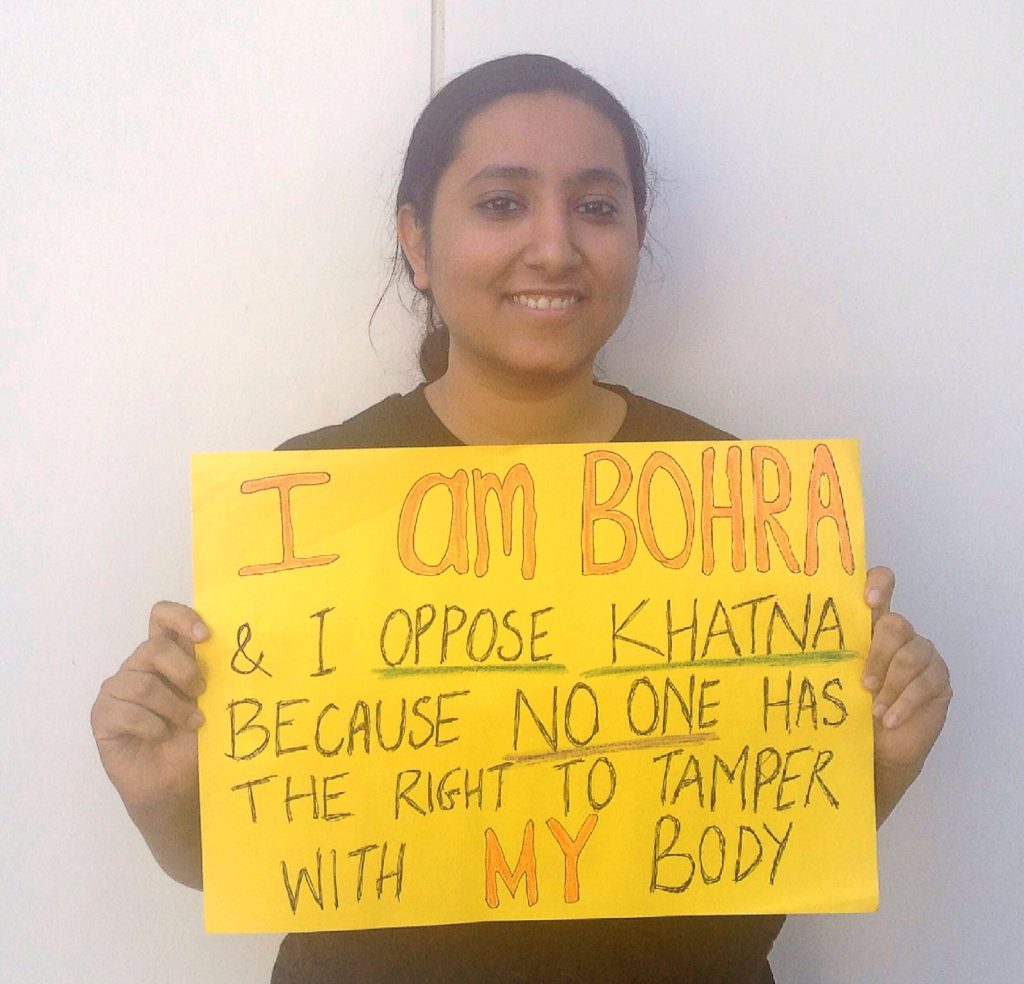
By Aarefa Johari (A shorter version of this piece was published on the British Medical Journal’s blogs site on January 20, 2017. Read it here.) Two years ago I met Sara (name changed), a bright mother of two and a member of the Dawoodi Bohra community in Mumbai. From the time her daughter was a baby, Sara was determined she would not put her child through the ritual of khatna – female circumcision – that is considered mandatory for all Bohra girls. She had heard too many times that khatna is done to curb a girl’s sexual urges, and she was completely against the practice. But when her daughter turned six, family pressure began to mount. Her mother-in-law was adamant that the child had to be cut at the age of seven, and after months of trying to resist, Sara finally caved in. She saw no choice but to have her daughter circumcised, so she decided to do everything in her power to ensure that khatna didn’t leave her little girl traumatised. No traditional, untrained “cutters” who use razor blades or knives to slice the clitoris; she wouldn’t even take her daughter to just any Bohra doctor authorised to perform khatna. Instead, Sara sought out a gynaecologist who agreed to completely sedate the child during the procedure. Female circumcision, known around the world as Female Genital Mutilation/Cutting (FGM or FGC), is recognised as a human rights violation by the World Health Organisation. It involves cutting or altering parts of the female genitalia for non-medical reasons. There are various types of FGC practiced around the world, with varying degrees of severity. The kind that Bohras practice – cutting all or part of the clitoral hood – falls within WHO’s definition of Type 1 FGC. The practice is illegal in at least 40 countries, because there are no medical benefits to cutting any part of the female genitalia. In fact, even the mildest form of FGC can have harmful health consequences, including bleeding, swelling, painful urination, infection and reduced sexual sensitivity. And yet, just two years ago, Sara’s seven-year-old daughter was cut in an operation theatre in a Mumbai hospital, by a licensed gynaecologist who administered general anaesthesia on the child so that she would have no memory of her clitoral hood being removed without consent. If most doctors and medical associations in India are unaware of such incidents, I wouldn’t be surprised. Until a few years ago, almost no one had heard of Female Genital Cutting being practiced in India. Even international campaigns against FGM/C focused mainly on Africa, and only in the last few years has it been acknowledged that FGC is globally prevalent. But in India, Bohras have been secretly circumcising their daughters for centuries. Like so many seven-year-old Bohra girls, I was cut as a child too. We are not a large community – barely two million in number – but those familiar with Dawoodi Bohras know us as a close-knit, well-educated, wealthy business community with a reputation for being progressive towards women. But the Bohras are the only group known to practice FGC in India so far. Other Indian Muslim sects don’t even consider the ritual Islamic, because there is no mention of it in the Quran. Bohra families, depending on who you speak to, give a variety of different reasons for practicing female khatna. “It is in the religion”, “it curbs sexual desire” and “it prevents pre-marital and extra-marital affairs” are the most common justifications; other reasons include hygiene and health, specifically the prevention of urinary tract infections and other diseases. Medically, of course, there is no proof of such claims. More recently, some Bohras have begun rationalising khatna with the strangest argument: they claim it is the same as “clitoral unhooding”, a surgical procedure that a number of doctors in Western countries perform on adult women to enhance sexual pleasure. I first heard this argument from Sara, a few months after her daughter was cut. The child may have been sedated in the OT, but the mother was still deeply uncomfortable with her khatna. After the “surgery”, Sara spent hours online trying to understand what exactly had been cut and why. She then came across a website on clitoral unhooding. It claimed that by removing the hood covering the clitoral glans, the clitoris is more exposed and thus experiences more stimulation and pleasure. Sara shared the website with another Bohra doctor who performs khatna. “Yes, this is exactly what our khatna is. It is done to enhance sexual pleasure,” the doctor claimed. This affirmation came as solace for Sara – her daughter was not harmed after all, and khatna turned out to have a “positive” intention. Her maternal relief was blind to the gaping holes in this “clitoral unhooding” theory, which were obvious on the website itself. As a surgical procedure, unhooding is recommended only for some sexually active women, if they have excess prepuce tissue that hinders orgasms by preventing the clitoral glans from protruding during arousal. Otherwise, the hood serves important function of protecting the clitoris from over-stimulation or abrasions. Unfortunately, now that there is a growing movement against FGC within the community, many khatna supporters are trying to promote clitoral unhooding as a “scientific” justification for cutting all seven-year-old girls without consent. If this isn’t enough to mislead parents, we are also witnessing another disturbing trend: the medicalisation of khatna. Medicalisation refers to the trend in which the cultural, non-medical practice of FGC is increasingly performed by a trained medical practitioner instead of an untrained traditional cutter. For several years now, Bohras in bigger cities like Mumbai have been getting their daughters cut by doctors (though not necessarily gynaecologists) in Bohra hospitals or clinics. They have come to realise that untrained cutters are not only unhygienic, but are also more likely to cut more than intended – particularly if the child is kicking or resisting the cut. The trend is now also spreading to smaller cities and towns. A few months ago,
The story of my start to the holy month of Ramzan
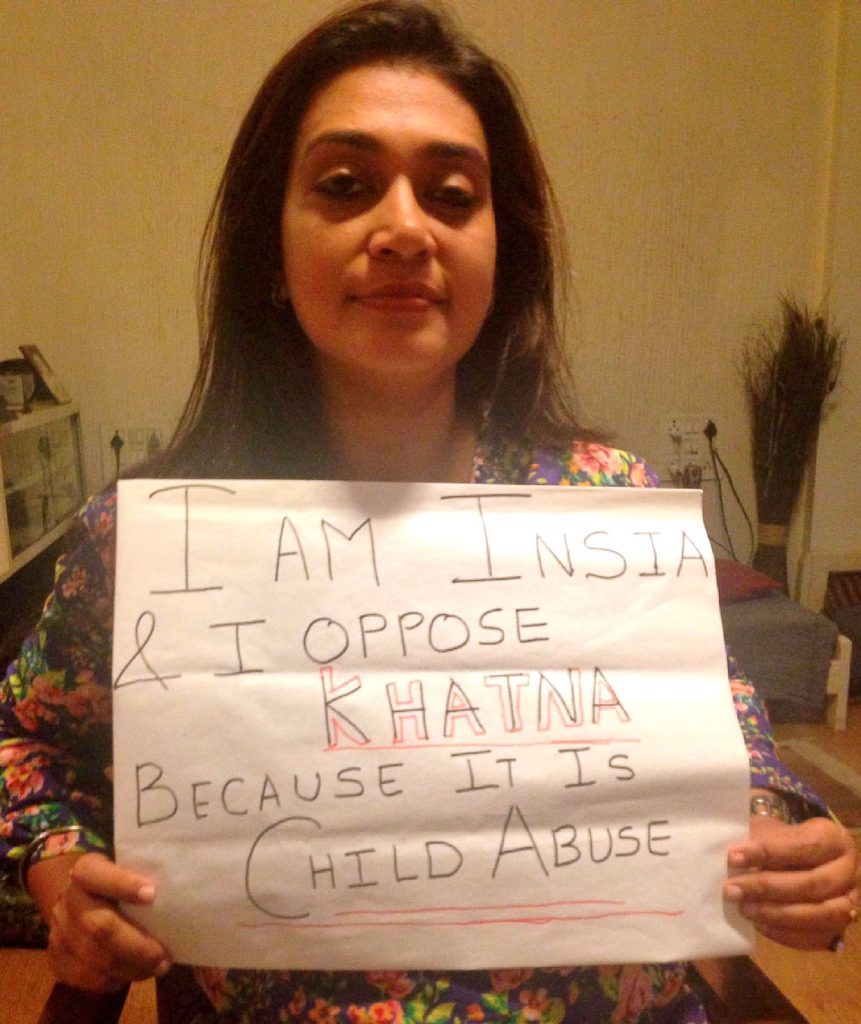
by Insia Dariwala, Sahiyo Ramzan — the time of peace, love, and prayers; a time for family gatherings, breaking fasts together and collectively praying for individual good, and the good of all in this world. Unfortunately, this Ramzan is showing me exactly the opposite, as I see the entire Bohra community (well almost), rising up to bring us down, in the guise of reinstating religious freedom. Over the past few days, as this circus on social media unveiled, I have been inundated with text messages, phone calls and emails about how Sahiyo is being talked about at every community gathering. We are being called names, our personal lives are being attacked, our religious loyalties are being questioned, and anyone who speaks for us is being targeted with a lot of viciousness. Many of those who speak for us have come back to us feeling saddened and helpless. Helpless because they want to stand up to the bullying, but are very afraid of the verbal attacks on their parents, on their relatives, and other family members. They are afraid of the humiliation, of the subtle ostracism, and the backlash from their jamaats, so they choose to stay anonymous. Anonymity has its own comfort. It allows you to speak up. It allows you to have a voice, and that’s exactly why we have so many girls and women who have chosen to let go of their right to be visible, only to stand up against this practice. They choose to live the duality of having a voice, and yet pretend they are voiceless, because that is the only way they will be accepted into the fold. For these very reasons, when I am asked why I, or my other Sahiyo girls, are not responding to the ‘Sahiyo is not my voice’ campaign against us, my answer to them is very simple — we never ever claimed to be anyone’s voice. We just made space for the women who wanted to have a voice. Why then are all these people feeling so threatened? It amuses me to see how a few voices of dissent could become such a big threat to an entire community. I am also amused to see the kind of efforts put into creating content to beat us up, acquiring social media handles, blocking our social media handles, and going to such great lengths to reinforce their identity. It’s sad to see how our attackers are just dismissing what so many women went through after they were cut. This backlash is exactly what prevents survivors of any trauma to share their stories. The pain endured may or may not have been the same for all, but the shame which they are being put through for speaking up about it, is the same. Unfortunately, it also reminds me of what so many survivors of domestic violence, child sexual abuse, and rape go through. It’s always the fault of the one who went through it. “She should have shut up.” “She should have been clothed more appropriately.” “She should have never disobeyed her husband.” And so the cacophony of society’s empty culture and tradition continues. Would it be safe to then say this has nothing to do with ours or anybody else’s religious beliefs? Would it also be safe to say that it’s disheartening to see, how an entire community’s faith rests on what’s cut between a girl’s legs? Is faith so weak, that it requires to be enforced through archaic and harmful traditions carried out thousands of years ago? Is it so weak that one needs to resort to bullying, and exploitation, in order to sustain its own existence? This message is for all the women who want this practice to continue — You can hate us all you want, and trick yourself into believing that you are doing this for your religion. But no religion practices hate. No religion asks you to put someone down to look good. No religion asks you to hurt, humiliate, threaten, and isolate someone who has a different point of view. Religion is what you ‘are’, not what you ‘pretend’ to be. It is about forgiveness, compassion, empathy, and the ability to reach out and accept. Today, as you pray while breaking your fast, do ask yourselves, Am I all of this? Then and only then, will it truly be the month of Ramzan.
Despite backlash, Sahiyo will continue to work with the community

The World Health Organization (WHO)’s guidelines on the management of health complications from female genital mutilation/cutting states that the “involvement of health-care providers in performing FGM is likely to confer a sense of legitimacy on the practice and could give the impression that the procedure is good for women’s health, or at least that it is harmless.” Unfortunately, this is exactly what is happening in India. It is difficult to rationalize how a medical professional who has taken a Hippocratic Oath to “…abstain from all intentional wrongdoing and harm, especially from abusing the bodies of man or woman, bond or free,” can promote khatna in India. In one part of the world doctors from our community are tried for violating the laws of their country (United States and Australia), and then we have doctors in India who are using the argument of religious freedom to advocate for a practice that is performed for non-medical reasons on a non-consenting minor girl. We have seen letters issued by various jamaats across the world, who use the hadeeth: حُبُّ الْوَطَنِ مِنَ الإِيمَانِ (Hubbul-Watan Min al-Eemaan), which translates to “Love of one’s homeland (country) is from faith”, to denounce the practice. Contrary to this, we have supporters of khatna, in India, who wish to continue with the archaic custom, despite the Indian government taking a stand and stating laws, the Indian Penal Code and the Protection of Children against Sexual Offences Act, against the practice. These are inconsistencies and we question them. Opposition to khatna is not at all unexpected. We had anticipated it, at some level, looked forward to being able to engage in a healthy exchange of views on a democratic platform. Unfortunately, in the last week, the premise of the opposition we have heard is based on half-truths. The fact that such strong opposition exists shows that our efforts to engage the community have led people to discuss the matter and question the practice. Sahiyo will continue to work with the community to bring an end to the practice in a proactive way. We add that that this practice is not only continued by Dawoodi Bohras. There are those from other South Asian communities who have spoken out against it too. Sahiyo focuses on engaging these communities, as well, but clearly, the largest group Sahiyo continues to engage is the Dawoodi Bohra community. We draw strength from knowing the high levels of education of women within the Dawoodi Bohras and are very hopeful that with a healthy dialogue we can re-evaluate this practice in the present day and come up with a solution that is in the best interests of all children and women. Last but not least, we would like to say that Sahiyo is saddened to be a target of deliberate slander, especially when the messages being passed around on WhatsApp and other social media platforms are blatantly untrue. To clarify a few doubts – Sahiyo has not started a petition addressed to the Syedna and we have not filed the PIL to ban khatna in India, either. We are only trying to engage with the community to break the silence around a practice we see as a violation of child rights and human rights. We are trying to ensure that the community is able to take an informed view on a rite of passage that can be, and sometimes is, harmful to children. We have always welcomed healthy discussion and now, more than ever, we think it is critical to be able to engage in a mature conversation on the subject. This is what we are trying to do through our advocacy campaign, Each One Reach One 2 that has been jointly launched with WeSpeakOut this Ramzan. The campaign will create means of effective communication to discuss the subject of khatna amongst various stakeholders. We hope that our brothers and sisters are able to use these and debate the issue to be able to understand the long-term and short-term pros and cons of this practice, rather than let emotion and religion alone influence their decision-making.
